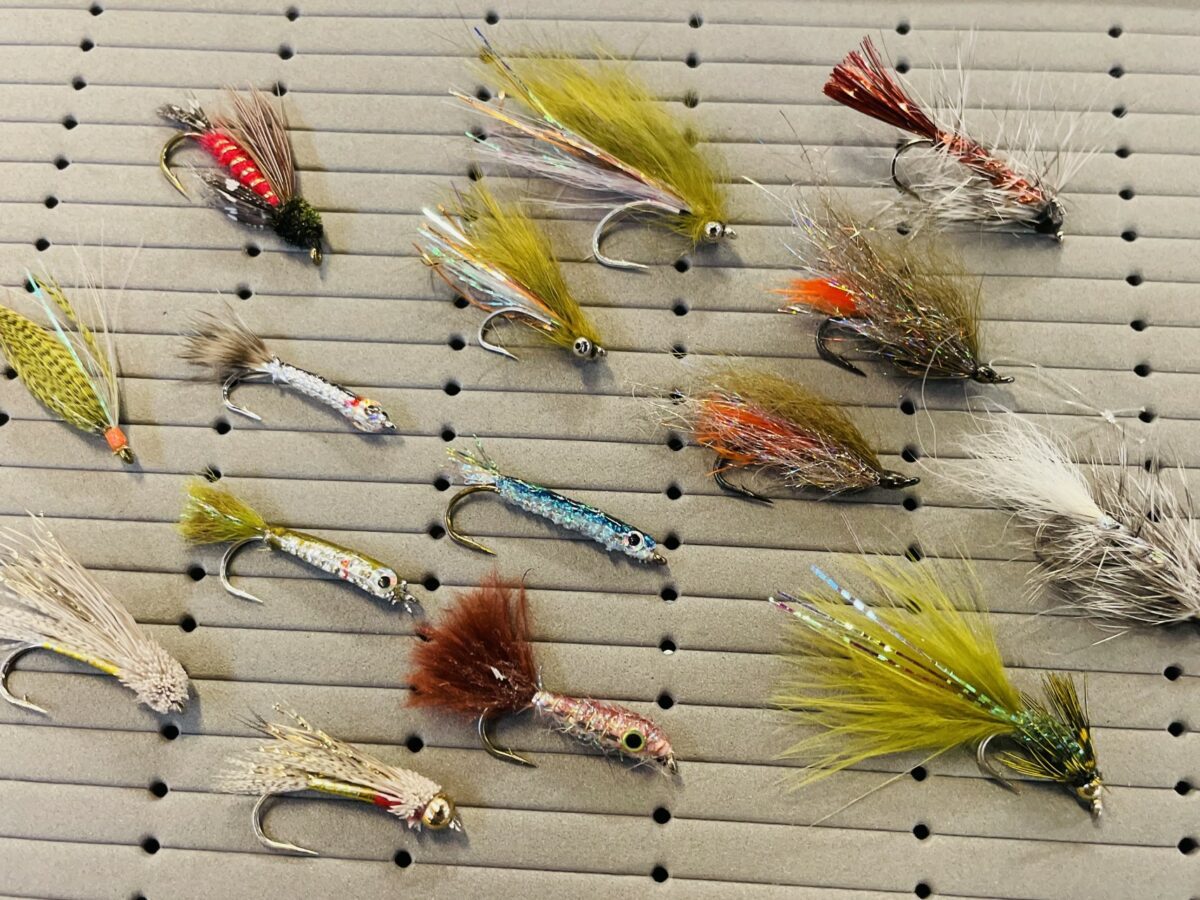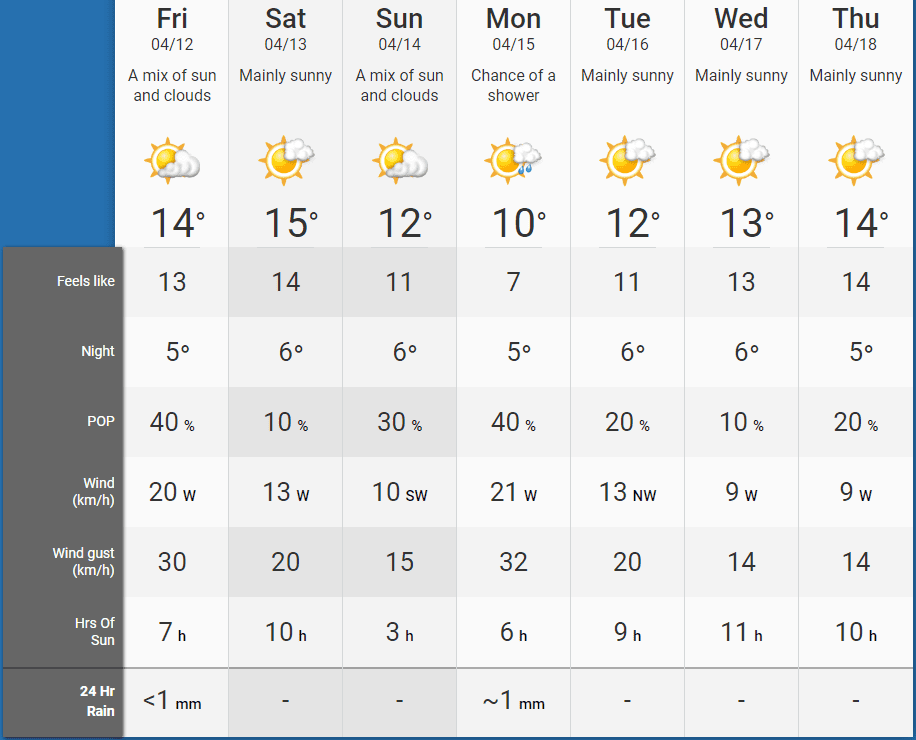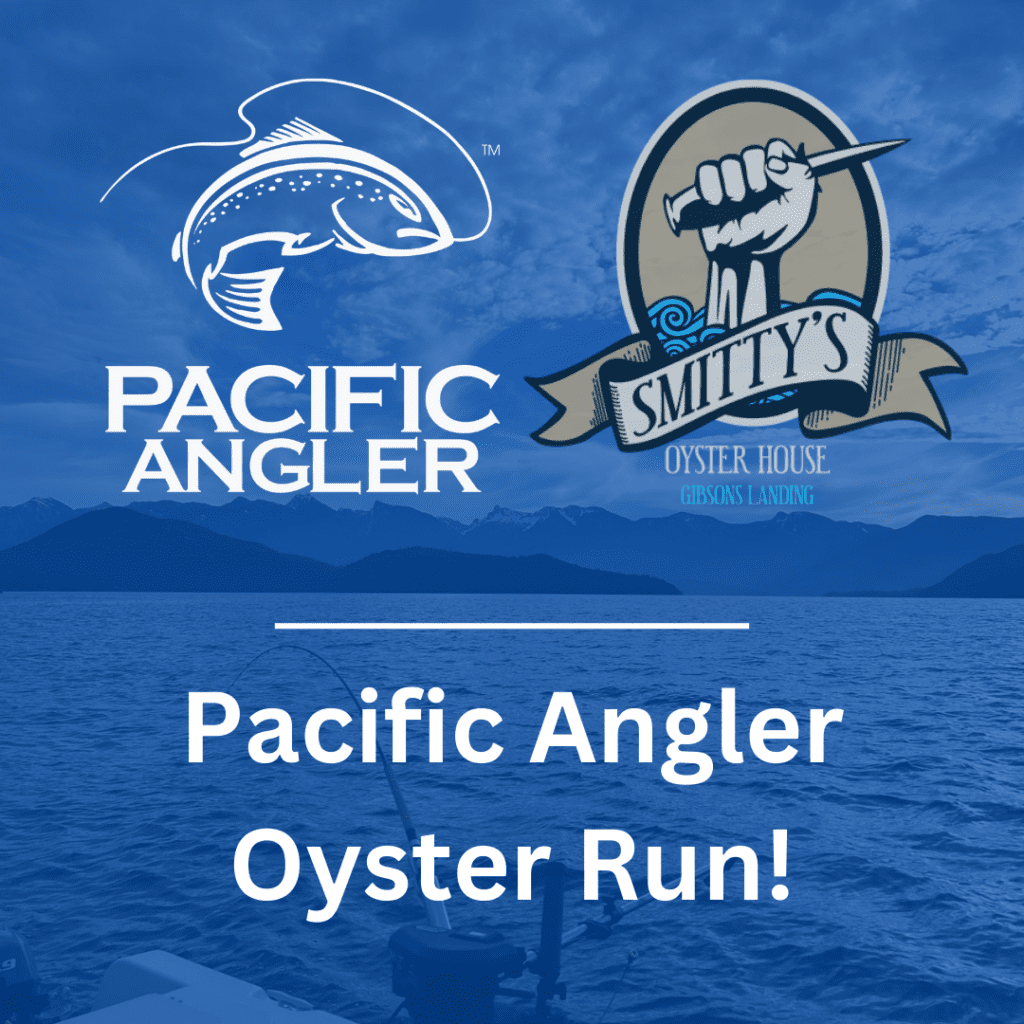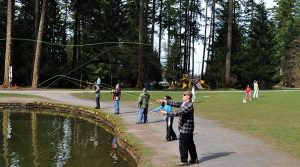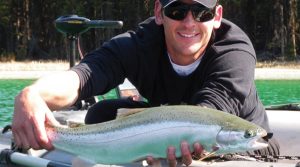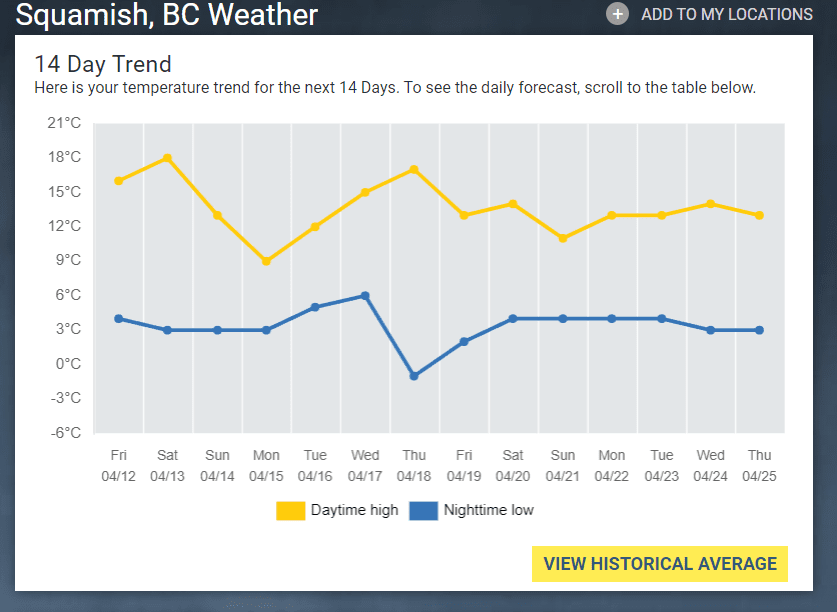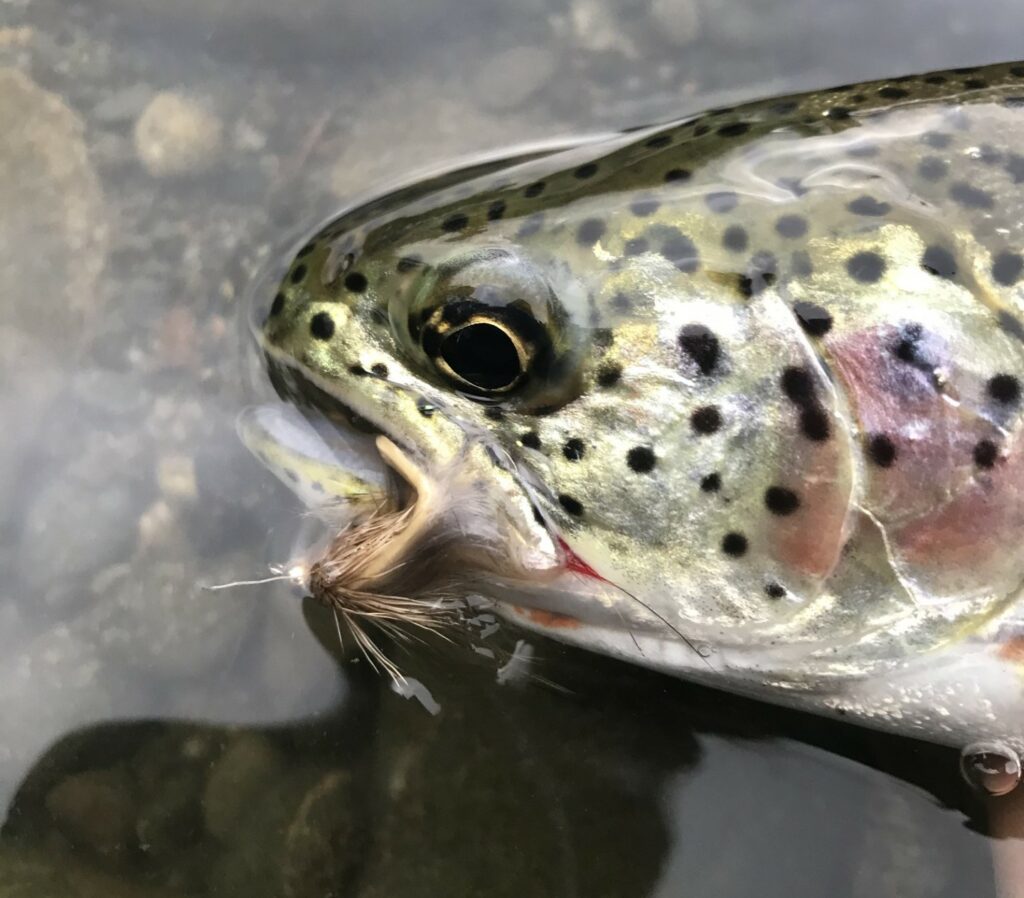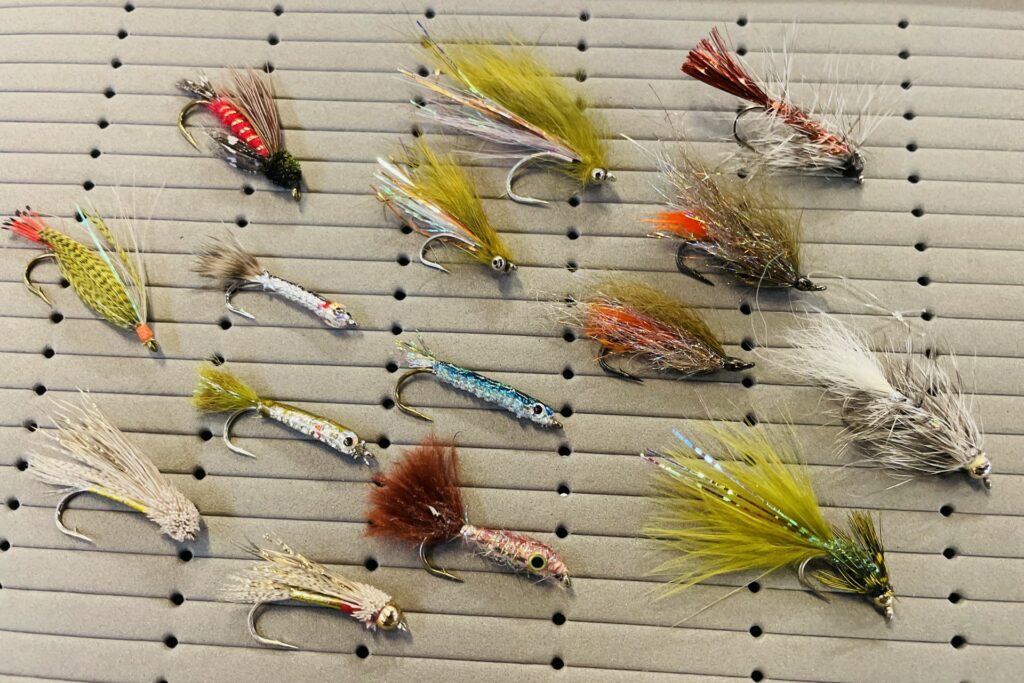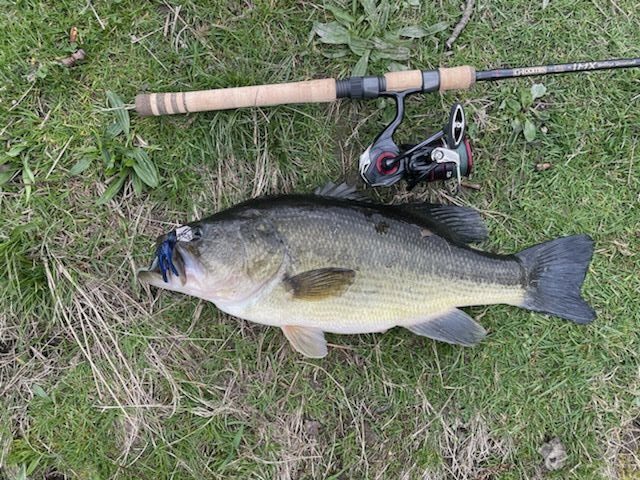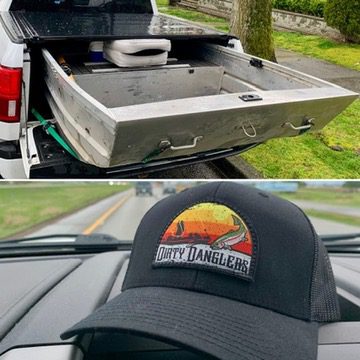OUTLOOK
We have very nice fishing weather this weekend with a mix of sun and cloud and mid teen temperatures. It is a great time to be an angler in the Vancouver area for sure!
This week, we have updates on the Valley Rivers, Sea to Sky Rivers and Interior lakes fishing but it is also time to start looking at bass fishing, carp fishing, cutthroat fishing and even a little early salmon river fishing/scouting.
Jordan has a Capilano primer where we have heard of a coho or two, Eric has the cutthroat article and Gavin takes a quick look at bass fishing. We just got our bass and carp sections restocked so if you’re heading out be sure to check out details below and head into the shop to stock up!
Jason tunes in with an Interior lakes fishing update for those of you getting ready for that fishery. If you’re staying local this weekend don’t forget about our local lakes. They have all been stocked recently and they make for a great morning or afternoon on the water.
If you missed it yesterday, we have a great saltwater outing planned for later this month. Participate in some catch and release chinook DNA sampling, drop some traps and enjoy lunch with your fellow anglers at Smitty’s Oyster House in Gibsons. Check out all the details on that event in the Industry Events and Updates Section below.
On to the report!
INDUSTRY EVENTS AND UPDATES
Pacific Angler Inaugural Oyster Run
The days are getting longer, the weather is warming up, and most importantly, the fish are here! There is no better time to join us for our inaugural Pacific Angler Smitty’s Oyster Run! This year we invite you for a full day of catch & release chinook fishing along South Bowen Island and beautiful Howe Sound with a lunch stop at Smitty’s Oyster House in Gibson’s.
Trip Details
- Date: Saturday April 27th
- Time: 7:00am to 3:00pm
- The Details:
- 4 guests per boat
- Catch & release chinook salmon fishing with prawning & crabbing
- First beer at Smitty’s Oyster House is on us!
- Cost: $350.00 per person + GST
(lunch at Smitty’s Oyster House and fishing licences will be at the cost of each guest). - Don’t have a group of 4? No problem – we are selling this excursion as individual seats. Come with a friend, come on your own! We will match you up for a day on the water with other anglers!
Check out all the details here!
To book your seat call Kathryn on our charter line at 778.788.8582 or email her at kathryn@pacificangler.ca
Sport Fishing Institute of BC – Big Spring Raffle
Its back! The Sport Fishing Institute of BC’s Big Spring Raffle. There’s an amazing lineup of prizes to be won, including a KingFisher Boat package, a trip for two to Langara Island Lodge, tackle and even a guided trip with Pacific angler!
At only $20 a ticket it is a great deal!
If you are not familiar with the Sport Fishing Institute of BC, they represent the interest of hundreds of thousands of anglers, work together with community and industry groups across the province, are dedicated to protecting, preserving, and promoting the sustainable access and opportunity to the public fishery on BC’s west coast.
By buying tickets to their raffles not only do you have the chance to win great prizes, but you are also supporting activities that strive to protect and enhance sustainable access to public fisheries for British Columbians, Canadians and visitors to BC.
Get your tickets here and good luck!
COURSES
Introduction to Fly Fishing
This course was specifically designed to give the new fly fisher the basic knowledge, casting skills and fly fishing strategies to effectively fish our local BC waters. This course is comprised of two sessions; 3hr evening seminar and a 3hr casting session. The dates below show the seminar date first and casting date second.
Dates: (Apr 29 & May 5), (Jun 4 & 8), (July 11 & 15), (Sept 18 & 22)
Cost: $180.00+GST
Seminar Time: 6:30pm – 9:30pm
Casting Time(s): 10am – 1pm or 1:30pm -4:30pm
Introduction to Chironomid Techniques
Chironomids are the number one food source for trout in BC’s lakes; however, few anglers have taken the time to become true masters of this discipline. Those that do, are often rewarded with the largest fish. Trevor is a former member of the Canadian Fly Fishing Team and an excellent chironomid angler. Dedication to his sport has helped Trevor to become one of the top fly fishermen in the province as well as a fisheries biologist. This course is comprised on one 3 hour evening seminar. Content is for beginner to advanced.
Date: April 23
Time: 6:30-9:30 PM
Cost: $75.00+GST
Check out the full course listing here and give us a call at the shop (604.872.2204) to sign up today!
FRESHWATER FISHING REPORTS
Squamish River Fishing Report
The weather looks great for getting out on the water this weekend and we have heard solid reports all week. We would like to see the water rise a little. It is lower than ideal and evening temps are still quite cold. When we look at the long term forecast these nighttime temps are not going to change all next week.
This will mean clear but fishable water levels well into the middle of the month. At some point, historically between the 15th of April and the 15th of May, we will see a spike in temperature and with it we will see the river move into freshet.
Until that spike in heat, get out and enjoy this great fishery!
Matt Sharp
Chilliwack River Fishing Report
As of writing this report, the C/V system is running at a somewhat low but perfectly fishable level. There’s not a lot of rain in the forecast, so it’s likely that the river will continue to drop over the next week, so this is likely to be the case for a while… unless it gets warm enough to trigger snowmelt, in which case the river will rise and colour up. Whether or not this happens and to what degree it does happen will depend on how warm it gets and for how long it stays warm.
There are still some fresh fish pushing into the system, but the run is definitely tapering off, as is expected for this time of year. Fresh fish will continue to enter the system all through April and even into May, but things will be tapering off over the next few weeks. A majority of the fish in the system have been there for a while by now, so the ratio of clean fish to dark fish isn’t what you could call favourable, especially if you’re fishing in the top-end of the mid-section of the river. The ratio of hatchery to wild fish is also less than stellar; this is due to the fact that most of the hatchery fish have already been caught and retained, while the wild fish will be caught and released- often several times. This serves as a good example of how proper catch and release practices result in very good survival rates for steelhead, and it should also serve as a reminder to make sure you’re following the aforementioned catch and release practices to ensure the survival of released fish.
Keep in mind that the upper river, from the Tamihi bridge to the boundary, closed on April 1st, so your fishing efforts are restricted to the mid and lower sections of the river for the month of April. The mid-section of the river, from the Tamihi bridge to the Vedder Crossing bridge, will close on May 1st, leaving the lower river, from the Vedder Crossing bridge to the confluence with the Sumas River, as the only fishable water for the month of May- but with the caveat that it will be fly-fishing only, so no conventional gear is allowed. The lower will close on June 1st, leaving the entire C/V system closed to all fishing until July 1st.
April can be a great time to get out to chase steelhead if you’re looking for a more casual, enjoyable experience. Most of the crowds will be gone, the weather will be significantly more pleasant, and there will still be good numbers of fish around. The fishing can be a mixed bag- sometimes the warmer water temps result in much more aggressive fish that are very willing biters, other times the fish don’t really want to play ball… probably because a vast majority of them have already been hooked at least once this season. Regardless, it’s a beautiful time to get out there and enjoy the spring weather; the chance of hooking a steelhead is simply a bonus.
Taylor Nakatani
Capilano River Fishing Report
Well folks, it’s now April, and with May just around the corner, we can expect to see some early coho arriving at the Capilano River.
These first-run fish to arrive are usually a little bit smaller than their late-Summer/Fall cousins and can provide a great urban fishery for some tasty eats.
Arriving over the next few weeks, anglers will start to encounter them with more frequency as we head into the first few weeks of May. These smaller ‘Blue Backs’ are great sport on lighter tackle, with most medium-actioned rods fitting the bill.
For the fly anglers, 7-8wt rods are still the norm to help turn over sink-tips as well as to help turn fish in the river current. If the dam is closed and the river is slowly meandering, a medium-fast 6wt can also suffice for the average size of these first fish.
That being said, anglers will want to be prepared with a variety of sinking tips to help get their flies into the zone depending on river conditions, as well as have flies that follow suit. Small nymphs, buggers, and flash-flies are all popular choices, fished on lighter fluorocarbon tippet. Remember, these first fish of the season aren’t overly large, and gear should reflect that.
For the traditional gear angler, main lines made up of 12lb-14lb mono paired with lighter leaders are common, with some anglers fishing light salmon braids such as 20lb-30lb tests. These braids paired up with 10-12lb fluorocarbon leaders are great for tossing smaller, lighter spoons and spinners often associated with this smaller and lighter fishery.
Keep in mind that a Salmon Conversation stamp will be required if one wishes to retain any legal-sized salmon, but not if you are just wanting to practice catch-and-release.
If float fishing for these first fish, smaller bits of roe can be popular. These will be about the size of your thumb nail and usually fished on a #4-#2 hook, barbless of course. When the fish first enter the lower stretches of the river, this is usually when most anglers get them on a variety of gear as they are quite fresh and still aggressive. This can mean that spinners, spoons, twitching jigs, flies, bait, and Colorado blades can all be great choices depending on which style of rod you choose to use.
When planning to target these fish, any time can be a great time to go as you can’t catch them from home. With that said, there are a few tips to help increase your odds:
- Try to go around an incoming/rising tide (Flood tide)
- Lower light conditions can help make these fish less spooky (think first/last light or overcast)
- A bit of drizzle or rain can help break the flat or calm surface tension, helping make these fish less weary
Remember to go with a variety of options to offer, whether on gear or fly. This helps tilt the odds in your favour in case you aren’t the first one thru a spot and need to play Cleanup Crew. Smaller Gibbs Crocs, twitching jigs, spinners, and other spoons are all great options for traditional gear anglers. For the fly angler, smaller flash flies can be great options, as can smaller drab and natural coloured flies.
Don’t be scared to dig into your warmwater box as well to dig up a few bonefish flies- these are great options for casting/stripping that most anglers won’t think about.
Keep it Barbless,
Capilano Crusher
Cutthroat Fishing Primer
Sea run cutthroat fishing is tricky but rewarding. Cutthroat can be encounter almost year-round but due to their nomadic nature it can be difficult to be in the right place to find them in numbers. In the spring, we welcome schools of salmon fry as forage for cutthroat. Once the fry school up it presents anglers a chance to intercept feeding fish. The spring season usually starts in March and improves through April, and May.
Finding the fish: Sometimes we just get lucky but more often it’s a combination of tides, weather, and location knowledge that makes for a successful outing.
– Look for rocky slow slopping beaches.
– Dynamic shore contours like bays and points that create small tide rips.
– Freshwater sources (salmon bearing creeks or close to a salmon bearing river is a plus.)
– Structure like boulder gardens, and pilings
– Tide lines
– Morning high tides
Tides play a big part in providing food for smaller forage fish and currents for trout to feed around. As the tide rises it frees plant debris and food items for small fish. It is not unusual to find trout shallow as they chase fry in close to shore. For these reasons I try to fish high tide changes. Try and get out and hour before high slack and stay until an hour after. Tide movement can also generate areas where fast and slow water meet. This is usually a point, bay entrance, or bit of structure where the tide moves fast past sheltered water. This creates a seam where fish can rest out of the current and intercept food… similar to a river situation.
There are also some more subtle signs that a particular location might be fishy. Healthy riparian zones provide food and cover for fry and small fish. Food and cover = fry = cutthroat. This will also attract other predators so look for cormorants, mergansers, and other waterfowl to help keep the confidence up.
Fly anglers can be successful with a basic 5 or 6 weight fly rod, floating line, and classic 9ft tapered leader in the 4x-5x range. As with anything in fly fishing, we can specialize and take this setup further.
If you are serious about this fishery I recommend:
– A good saltwater sealed fly reel. This will provide years of use without saltwater damage.
– Fluorocarbon leaders. I like the saltwater tapered leaders by Rio. These have a picture of a bonefish on the package that throws off most local anglers, BUT, these have excellent durability and stiffness for dealing with wind and tough saltwater environments.
– Stripping basket. You may not love the basket, but your fly line will. This will help protect the line when fishing sinking lines or shallow wading on sharp rocks and barnacles.
– Clear intermediate fly lines. I have a soft spot for clear lines on the beach. I like how they get just under the surface, so you have less wave action affecting your connection to the fly and potentially less chances of fowling on floating debris… but this makes it hard to fish surface flies.
– Shooting lines. When the wind picks up a short but powerful line can help bust though wind. Lines like the outbound short and coastal quick shooter can help on the windy days. Note these might punch casts but they struggle with delicate presentations.
Flies:
I would group flies for cutthroat in 3 categories. A good cutthroat box will have some of each.
– Natural representations. These are accurate ties of food items. Andre’s fry patterns, rolled muddler minnows and euphausiids/krill patterns. These are necessary on calm days with clear water. These conditions can make for picky fish.
– Attractor patterns: these may not resemble food items but get the attention of the fish. Patterns like the Number 9, California Neil, medusas, and the good old wooly bugger. When the wind is up, and the water is coloured try something loud.
– The third style I would say straddle the bridge between attractor and natural. Small clousers always find a way into my beach boxes. Patterns like the Mikey Finn have bait fish profiles with attractor colours. Surface poppers or gurglers resemble the movement of struggling bait fish but do not look like fry. These flies play on the aggressive trout nature while still somewhat resembling a prey item. Great staple patterns for the days you do not know what to throw.
Terminal tackle for gear anglers usually consists of a selection of croc spoons, rooster tails and blue fox spinners. Some anglers even opt to cast and retrieve flies behind a small water bobber… don’t be surprised if a greedy trout tries to eat your bobber!
After a session of beach fishing make sure to give your gear a good wash. Reels rods and lines should all get attention. Flies too! Rinse waders and boots with fresh water before hanging to dry. This is especially important with boots to keep metal grommets and hardware in decent shape. If you frequent the beaches, you may consider a second pair of saltwater boots. The freestone salt or flats sneaker have rubber soles for long marches along the beach without tearing up your river felts.
This is a great fishery for newer anglers looking to build some skills and graduate from stocked trout, or seasoned anglers to get out for a few hours of chasing wild fish fishing during the shoulder season. All the advice in the world will not catch you fish so get your feet wet, have fun and cover water.
Eric Peake
STILLWATER FISHING REPORTS
Bass Pre-Spawn Report
Pre-spawn bass fishing is in full swing, we are into the peak feeding for our local bass. Local systems have been pumping out bass on primarily moving baits such as chatterbaits, spinnerbaits, crankbaits, and swimbaits.
Covering water with a presentation you have confidence in is key; look for shallow flats with mixed structure as well as reed beds. For those that are on vessels, finding water above 50 degrees will produce the best results for active fish. Pay attention to wind direction as usually the wind-blown bank will be the warmest side of the lake.
If you have any questions regarding bass fishing, come in and have a chat with us!
Gavin Lau
Interior Lake Fishing Report
Well, I held off as long as I could, but I just had to get up here. In fact, by the time you are reading this report, I will likely just be finishing up my day on the water and hopefully will have watched multiple bobbers disappear!
As we end this second week of April, there is really a lot going on! We have lakes that still won’t be off for weeks, lakes that came off this week, lakes that came off a week ago and are now turning, lakes that have cleared up but are still cold so not a lot of hatches, and lakes that are warming up and are now seeing substantial chironomid hatches.
The game we play as lake anglers this time of year is where to go and it’s a tricky one. Things change fast. A lake can be clear after ice off, fishing well and only a few days later, with some wind, it is turning and dirty. A dirty lake can also clean up fast, get some heat, and have great hatches relatively quickly. You never really know until you go.
In terms of iced off lakes, there are lots now, including Tunkwa and Leighton. Others like Marquart and ones in that area are also off. Tunkwa is 3,751 feet and was off a week ago, so that does put things in perspective. In terms of elevation and time of year, it’s an early start to the season for sure. In terms of fishing, it has been a bit of a slow to get going on the hatches because it has been relatively cool. I am actually happy it has been cool, so things progress slowly. This is better than a quick early season heat wave.
For techniques it will really depend on what lake you are hitting. It could be leeches, and blobs in the shallows or chironomids out in 15-20 feet. The last few weeks we have covered early season tactics, so as usual, make sure you have all the early season staples for the shallow waters. I’ll report back on the chironomid fishing next week and offer some tips and tricks as the hatches will really start to happen in the back half of the month.
See you in the shop or on the water,
Jason Tonelli


